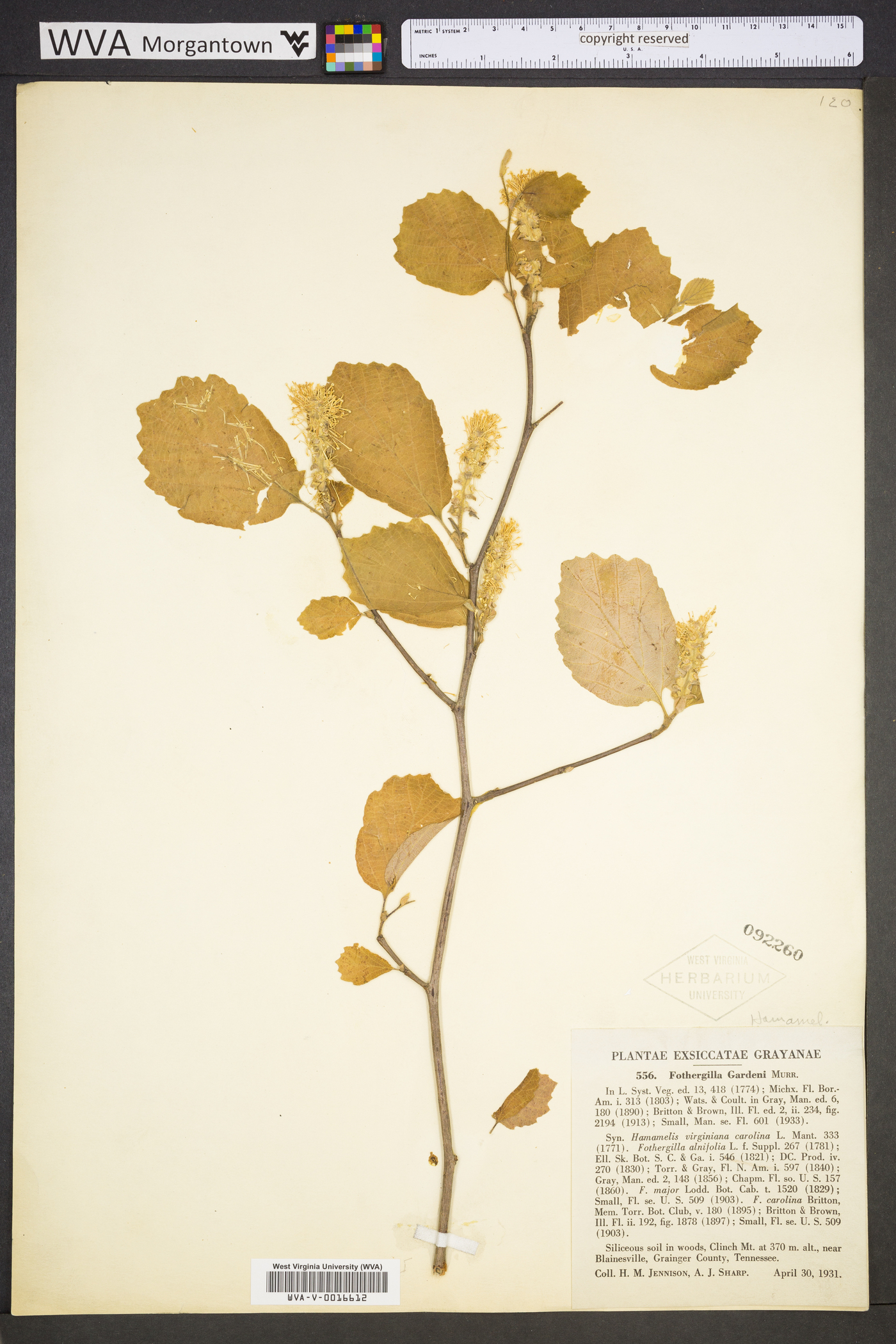
|
Family: Hamamelidaceae |
Shrubs , usually multitrunked, from short stolons, often forming dense clumps, not aromatic or resinous; twigs, leaves, and flower buds stellate-pubescent. Bark light gray on mature branches, smooth. Dormant buds naked, densely stellate-pubescent; terminal bud short-stalked or sessile, with 2-4 subtending scales. Leaves short-petiolate. Leaf blade elliptic to obovate to oblong, ovate, to nearly orbiculate, unlobed, pinnately veined, base oblique, cuneate, truncate to rounded, margins transparent, crenate or serrate-dentate, occasionally undulate to entire, apex rounded to acute. Inflorescences terminal, elongate, many flowered, dense spikes, sessile or short-pedunculate. Flowers bisexual, fragrant, basal flowers functionally staminate, appearing before leaves; calyx lobes 5-7(-9), erect, minute, irregular, forming shallowly campanulate hypanthium with adnate androecium; sepals connate; petals absent; stamens 12-32, conspicuous, in centrifugal sequence on rim of hypanthium; filaments white, 4-17 mm, conspicuous, the longest somewhat club-shaped distally; anthers dehiscing by 2 flaps; staminodes absent; ovary adnate to hypanthium, ca. 1/3 its length; styles 2, becoming hornlike, with recurved tip. Capsules in groups of more than 3, stylar beaks prominent, appressed stellate-pubescent mixed with longer, straight hairs on calyx rim and distally, loculicidal. Seeds 2 per capsule, reddish brown, glossy, bony, not winged. x = 12. The species of Fothergilla are spring-flowering shrubs with inflorescences of apetalous flowers and heads of showy white stamens. Both species are in cultivation. The relationship of Fothergilla to other genera of the Hamamelidaceae is unclear. The genus is restricted to the southeastern United States.
|
This project was made possible in part by the Institute of Museum and Library Services [MG-70-19-0057-19].
Powered by Symbiota



